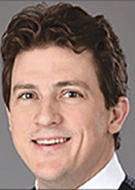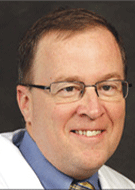Chief Wellness Officers Take on a Critical New Role in Radiology, Health Care
Emerging position shows shift in mindset toward physician well-being


Although a typical radiologist’s shift was significantly longer even a decade ago, overall stress and burnout levels are much higher today.
“Back then, when surveys came out about happiness, radiologists were near the top,” said Tom Vaughan, MD, a diagnostic radiologist at Kent Diagnostic Radiology Associates and Chief Wellness Officer at Bayhealth Healthcare, both in Dover, DE. “Now, we consistently rank near the bottom.”
Dr. Vaughan attributes radiologist stress to work overload, a lack of breaks between cases and the risk of malpractice — possibly even many years after a scan. Many radiologists struggle with isolation due to limited interaction with colleagues and patients. Some radiologists feel their work lacks meaning.
“It is also one of the most difficult jobs on earth and there is pressure to be perfect,” Dr. Vaughan said.
But in recent years, radiology and health care in general have made significant strides in recognizing the importance of wellness in the workplace and in implementing strategies and solutions to promote well-being.
Evidence of that is the position Dr. Vaughan has held at Bayhealth for two years: chief wellness officer. The position is not only new at Bayhealth, but at a small, but growing number of institutions that have added chief wellness officers.
“The fact that a position like a chief wellness officer exists represents a big change in the mindset on physician wellness,” Dr. Vaughan said. “Thirty years ago, no one in the radiology workplace cared about physician wellness. This is a major step forward.”
Dr. Vaughan, who served as chair of the radiology department at Bayhealth for 15 years, developed an interest in physician burnout and wellness over the years. About eight years ago, he joined with colleagues from surgery and anesthesia to form a Medical Staff Wellness Committee, which led to the creation of a system wide Medical Staff Wellness initiative charged with promoting well-being. Organization leadership then committed to adding a systemwide wellness position at the facility of about 400 medical staff members.
“A little over a year ago, I cut back to two days a week in radiology to take on the position of Bayhealth Chief Wellness Officer,” Dr. Vaughan said.
Before starting the position, Dr. Vaughan completed the Chief Wellness Course offered by the Stanford Medicine WellMD Center. The new, interactive, one-week immersion course is designed to equip physician leaders with the tools to lead wellness efforts in departments, divisions, sites and groups.
Frontline Leaders Critical
The chief wellness officer model differs from facility to facility. Some health care organizations have hired a chief wellness officer to oversee multiple hospitals and large groups of medical personnel. Others, like Indiana University (IU) School of Medicine in Indianapolis, have a systemwide chief wellness officer along with wellness leaders at the department level, said Brandon Brown, MD, a pediatric radiologist at IU who serves as co-chair of wellness for the radiology department.
Every team needs a champion of their micro group, said Dr. Brown, who is also chair of RSNA’s Professionalism Committee.
“I would caution that it is hard for one person to oversee so many groups,” Dr. Brown said. “In practice, it is hard to say something that speaks to every single staff member.”
While chief wellness officers play a critical role, Dr. Vaughan agrees that systemwide initiatives can’t effectively address issues across the board since each department has its own unique challenges. Delegating to leaders is critical.
“So the best solutions are developed by frontline leaders addressing their specific needs in addition to systemwide efforts,” he said.
Wellness is a Group Effort
Dr. Brown works to bring radiology professionals together, which is often a step toward improving attitudes. He creates different types of opportunities to build culture among radiology peers — everything from professional development programs to holding open houses at a local brewery.
“It is a unique mix every month. We get attending physicians as well as trainees. They get a better understanding of people’s jobs,” Dr. Brown said.
He also tries to pair people with similar interests in mentorship programs and taps into local talent for professional development sessions. And he works to keep wellness initiatives close to home.
“Wellness only happens locally,” Dr. Brown said. “The vitality is in people locally knowing their colleagues, knowing the stressors, giving feedback on what will be a success here. We are not suggesting what will work for radiologists in Minneapolis or Houston. They have their own unique sets of responses.”
Dr. Vaughan is pleased that more health care systems are putting a priority on wellness.
“Non-health care fields have been doing it for years. Now, we need to look at self-care and self-compassion.”
For More Information
For more information on the Stanford Chief Wellness Officer Course, go to wellmd.stanford.edu.
Find wellness-related education content in the RSNA Online Learning Center.
Watch an RSNA Microlearnings video on Moving Past Burnout with Cheri L. Canon, MD
Read previous RSNA News articles on wellness: